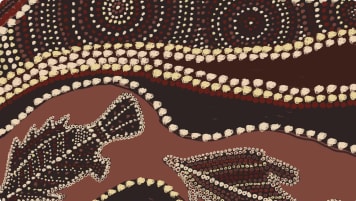Aboriginal Kinship Systems
Article about Aboriginal kinship to assist small group tours in Australia understanding Ancient aboriginal society and the contemporary view. Kinship influences the relationships including aboriginal trading routes.
30 Dec 20 · 8 mins read
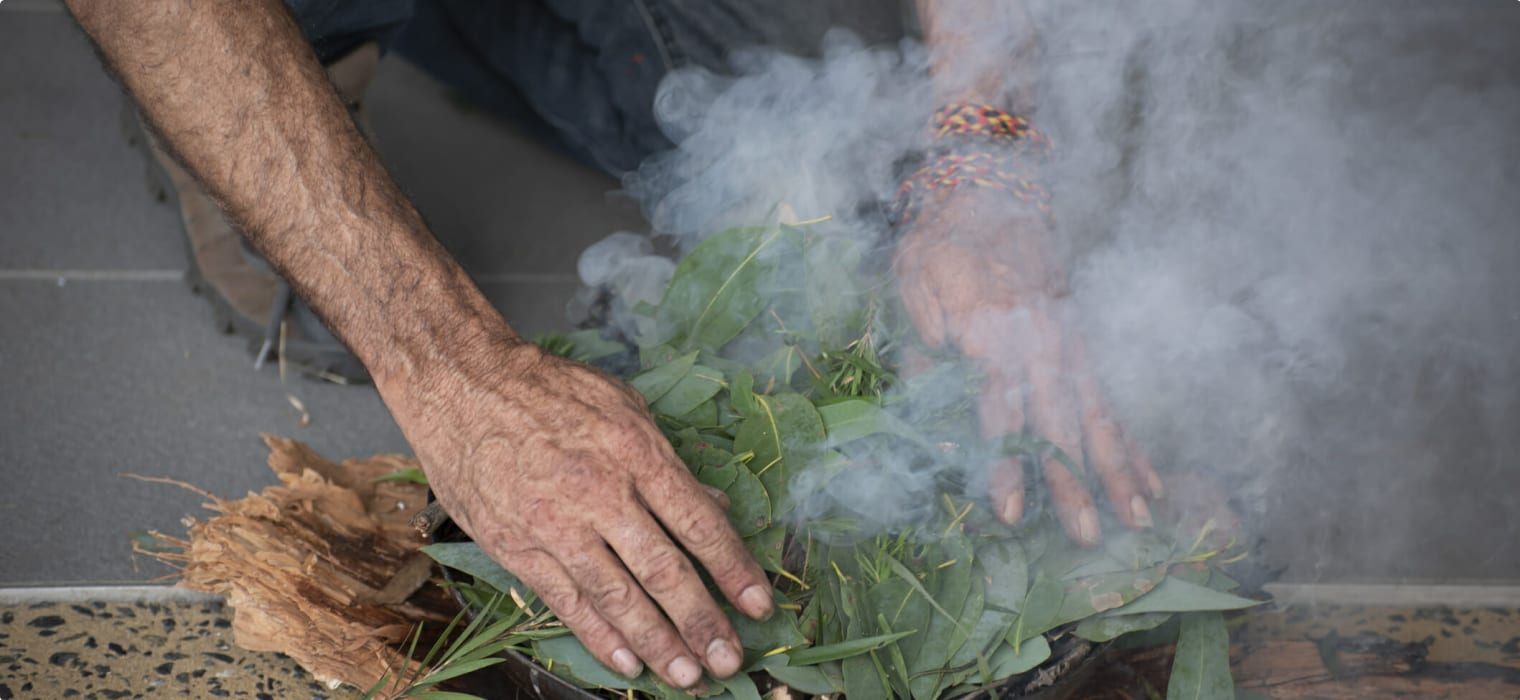
The Importance of Australian Aboriginal Kinship Systems
Aboriginal lore was laid down in the Dreaming which is the embodiment of Aboriginal creation. The Dreaming gives meaning to everything and affects the relationships people have with the land, their environment, each other and their totems. AboriginalAustralia was the original multicultural country with over 500 separate nations each with its own language, beliefs, spirituality and lore. There were overlaps and common themes, but it is important to recognise the diverse range of Aboriginal peoples throughout Australia.
Kinship is at the heart of Indigenous society. An Aboriginal person’s position in the kinship system establishes their relationship to other people and to the universe, prescribing their response to other people, the land and to natural resources. Traditional kinship structures remain important in many Indigenous communities today.
When two indigenous Australians meet as strangers, one will say to the other, “Who’s your mob?” They are asking where do you come from, where do you belong and who are your family? This enables each to place the other and to learn what to expect. The kinship system is a feature of Aboriginal social organisation and determines how people relate to each other and their roles, responsibilities and obligations to one another, ceremonial business and land. The system also determines who marries whom.
There are three key words used in describing kinship: moiety, totems and skin names.
As part of our commitment to understanding and sharing our knowledge of the history, culture and landscapes of Australia it is recognised that an appreciation of indigenous activity is an important facet of our learnings on Odyssey Traveller small group tours for mature and senior travellers be they a couple or solo traveller in Australia. This article is part of a continuing series of pieces on art, ancient landscapes and Aboriginal settlement of Australia dating back some 120,000+ years ago.
Moiety- a divided system
According to moiety, everything is split in half. This includes each individual and the environment. It is a bit like yin-yang. Each half is the mirror of the other rather like the palm and back of the hand. To understand the whole universe, the two halves must come together to form the whole. Each nation and language has its own term for Moiety. For example, the Yolngu people of north-eastern Arnhem Land are either Dhuwa or Yirritja. To the Yolngu, ancestral beings assigned everything in the universe to either the Dhuwa or the Yirritja Moiety. For example, the black cockatoo is Dhuwa, while the white cockatoo is Yirritja. The two Moieties complement and balance each other in ceremonies, marriage, and daily life. A person’s moiety can be determined by their mother’s side (matrilineal) or their father’s side (patrilineal). The Pitjantjatjara are classified into moiety groups -‘our bones’ or ‘inside’ and ‘our flesh’ or ‘outside’, but they do not use skin names.
Understanding the Totem
Another foundation of kinship is the totem system. Each person is given at least four totems – their personal, family, clan and nation totem. Totems link a person to the physical universe: to land, water, geographical features and animals. Although family, clan and language group totems exist before a person is born, an individual totem will recognise personal weakness or strength or a particular circumstance. A nation totem is a natural object, plant or animal that is inherited by the large group members of a clan or family as their spiritual emblem. Totems define peoples’ roles and responsibilities, and their relationships with each other and creation.

Each clan family belonging to the group is responsible for the stewardship of their totem: the flora and fauna of their area as well as the stewardship of the sacred sites attached to their area. This stewardship consists not only of the management of the physical resources ensuring that they are not plundered to the point of extinction, but also the spiritual management of all the ceremonies necessary to ensure adequate rain and food resources at the change of each season. Cultural burning is a practice associated with stewardship. The land is burnt at prescribed times and in a prescribed way to protect that land, the resources on it and the people who rely on and care for both.
Two totems of the Kamilaroi or Gamilaroi nation (people of the Liverpool Plains – Narrabri, Gunnedah, Moree) are the eagle and the crow. Under the eagle the clan totems include ringtail possum, red kangaroo, quoll, wallaroo, platypus, quail, barking owl, emu, brolga and death adder. Under the crow totem the clan totems include brush-tailed possum, bandicoot, echidna, eastern grey kangaroo, pelican, white cockatoo and kookaburra. Personal totems are chosen by a special incident during pregnancy or birth and may include one of the above. Marriage laws in the Kamilaroi nation mean that one cannot marry within the same nation totem or within the same clan or family totem. Individuals are accountable to their totems and must ensure these totems are protected and passed on to future generations.
I worked with a man whose country was western Queensland and his totem was the water dragon. He loved visiting my home in regional NSW because there were water dragons along the river. He knew he would always be safe and welcomed there, and he would never hunt or eat water dragons. If a Wiradjuri man from along the Lachlan River with a totem of Birigun or red kangaroo travels to Queensland and enters strange country, once he announces his totem, that group will try to find someone with the same totem and will say, ‘There is your aunty or there is your uncle’. Instant family caused by the shared totem.
Skin names
Another foundation of kinship are skin names which work in a similar way to a surname. They inform how people are linked to one another and their obligations to one another. Unlike the system of using surnames, an individual will not have the same skin name as their parents, nor would a husband and wife share the same skin name. An individual gains a ‘skin name’ upon birth based on the skin names of his or her parents, to indicate the section/subsection that he/she belongs to. It is a sequential system based on the mother’s name (in a matrilineal system), or the father’s name (in a patrilineal system), and has a naming cycle. (See the chart below which applies to the Kamilaroi or Gamilaroi people).
Moiety Female Marriage Class Marries Male Marriage Class Children will belong to: Wudhurruu Gabudhaa Yibaay Marrii, Maadhaa Maadhaa Gambuu Gabii, Gabudhaa Yangu(r)u Buudhaa Marrii Yibaay, Yibadhaa Yibadhaa Gabii Gambu, BuudhaaThe people of each country will have a system of between eight and sixteen subsection groups specifying the determinants.
This knowledge was not written down nor put into charts, but ‘known’ by the elders or ‘knowledge keepers’ and was entirely oral.
The Lardil people of Mornington Island in the Gulf of Carpentaria have eight subsection groups, shown here with some of their totems:
Skin Groupings Totems May marry onlysubsection group Children will be Balyarriny Black tiger shark,
sea turtle Kamarrangi Buranyi Bangariny Brown shark, turtle Yakimarr Ngarrijbalangi Buranyi Crane, salt water,
sleeping turtle Kangal Balyarriny Burrarangi Lightning, rough sea,
black dingo Ngarrijbalangi Kamarrangi Kamarrangi Rock, pelican, brolga,
red dingo Balyarriny Burrarangi Kangal Barramundi,
grey shark Buranyi Yakimarr Ngarrijbalangi Rainbird, shooting star,
egret Burrarangi Bangariny Yakimarr Seagull, barramundi,
grey shark Bangariny Kangal
This means that there are at least four generations before blood ceases to be ‘too close’ for marrying.
The dualities in the Kinship System also indicate where interactions should not occur. Once childhood passed relationships between actual brothers and sisters were often restricted and involved some form of avoidance. The most outstanding avoidance relationship was between a man and his actual or potential mother-in-law-not just his wife’s mother but all women and girls who were classified as “mother-in-law.” Such avoidance could be sitting apart, sitting with back to the other, not travelling in the same car. This is not out of rudeness, but out of respect for the lore.
Early contact relationships with non-Aboriginal people were very uncomfortable for Aboriginal people since it was unheard of for a person not to be ‘something’ (i.e. not to have a skin classification). Some non-Aboriginal were given skin names. Some non-Aboriginal people mistakenly believed that this is a sign of acceptance by the people. It is truer to say that it was a mechanism Aboriginal people employed to make their dealings with non-Aboriginal more comfortable for themselves, even though non-Aboriginal, through ignorance, continually gave offence under this system. More recently, people have generally come to understand that non-Aboriginal have ‘nothing’ and are regarded as ‘free’ from any kinship commitments of the kind that govern Aboriginal society. Aboriginal people today will often use the word ‘aunties’ to describe their mothers rather than try to explain the complex idea to us, but simple to them.
Kinship in the community is complicated.
This complex family structure with every member knowing his/her place shows why the stolen generations felt bereft and lost. It was not just losing a mother and a father, but generations of mothers and fathers and siblings. The ‘Stolen Generation’ is the term used to describe the children that were removed from their families from the early 1900s through implementation of Government policies. Aboriginal people refer to these children as “taken” or “stolen”. It is one of the most significant Government policies to impact on the Aboriginal community and its effects are still reverberating in the Aboriginal communitybecause not only did the family group lose members, but those individuals lost the whole kinship system that maintained their sense of being.
In addition to the issue of the ‘Stolen Generation’ there are also concerns for many Aboriginal children who experienced adoption or fostering practices. It has only been recently that Government policy has recognised the importance of placing Aboriginal children within their own community to keep them connected with their culture. Past Government policies have resulted in inappropriate placements with non-Indigenous families where their Aboriginal culture was largely ignored or misunderstood.
Another basic principle of this system in traditional societies is the equivalence of same-gender siblings. According to this principle, people who are of the same gender and belong to the same sibling line are viewed as essentially the same. Thus two brothers are considered to be equivalent. If one has a child, that child views not only his biological father as father but applies the same term to the father’s brother. The same principle applies to two sisters with both being mothers to any child either one bears. As a father’s brother is also identified as father, the latter’s children will be brothers and sisters, rather than cousins. There are no half-brother or half-sisters – they are just brothers and sisters. Several people are identified by an individual within each classification. Thus a person has several fathers, several mothers, and many brothers and sisters.
When speaking to, or about, another person in Aboriginal societies, the individual’s personal name is rarely used. A person is addressed by the appropriate relationship term, e.g. father, aunt, or older brother. Another person is referred to as so-and-so’s son or mother. The personal names are seen as essentially part of the individual and are used with discretion
Aboriginal kinship ties, values, beliefs, identity and language are maintained by the family. The continuance of Aboriginal societyis dependent on keeping Aboriginal families strong and healthy both physically and culturally.
“You will never be an only child. Here’s all your other brothers and sisters…You’ve got all these other mothers and fathers to support and teach you. That’s the strength of the system…That extended family take it really seriously and want to be engaged on that life.” Dr Lynette Riley (Wiradjuri and Gamilaroi woman)
External articles to assist you on your visit to Australia:
Related Tours

days
Nov, Mar, May, Jul, Sep +2Escorted small group tour North East New South Wales
Visiting New South Wales
Small group tour exploring the the North East region of New South Wales for mature and senior travellers. Travel, learn and explore about New England's history, the coast, National parks and regional towns in a time capsule surrounding Mudgee.
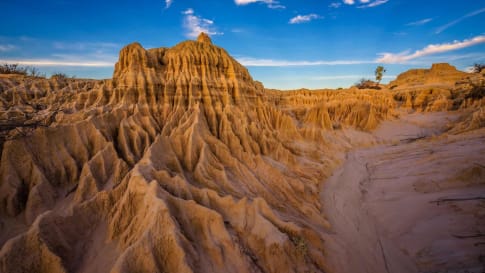
14 days
Mar, May, Jun, Jul, Aug +3Escorted small group tour of Western New South Wales
Visiting New South Wales
Discover the the Brewarrina fish traps, Aboriginal art at Mt Grenfell and visit the opal fields of White Cliffs. This small group also visits the World Heritage Site of Mungo man and lady stopping in Mungo National Park and other significant locations such as Broken Hill.
From A$9,250 AUD
View Tour
days
Mar, May, Aug, Sep, Oct +2Small group tour of World Heritage sites and more in the Southern States of Australia
Visiting New South Wales, South Australia
Discover the World Heritage Sites of the southern states of Australia travelling in a small group tour. A journey of learning around the southern edges of the Murray Darling basin and up to the upper southern part of this complex river basin north of Mildura. We start and end in Adelaide, stopping in Broken Hill, Mungo National Park and other significant locations.
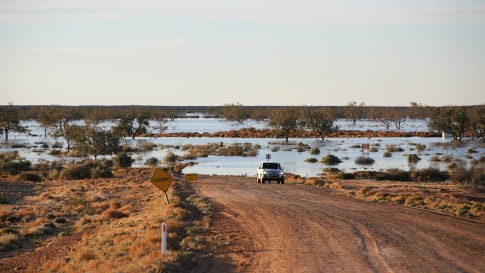
65 days
MarLong tour of Australia for a small group
Visiting New South Wales, Northern Territory
Small group tour for senior couples and solo travellers touring Australia. Travelling through the outback and visiting many of the famous sights as well as off the beaten track locations. Learn about the history of the people who explored the deserts, from indigenous communities to Europeans, as well as Burke and Wills, visit White Cliffs, Marree and far north Kakadu and the Kimberley.
From A$48,995 AUD
View Tour
days
Feb, Mar, Apr, May, Jul +2Small group Motorcycle tour of South Australia
Visiting South Australia
Escorted small group tour for senior motorcycle riders of the Flinders range in South Australia from Adelaide. Learn about Coober Pedy, Wilpena pound and water system of Lake Eyre as we explore and learn also about the history of the people who explored the Flinders.
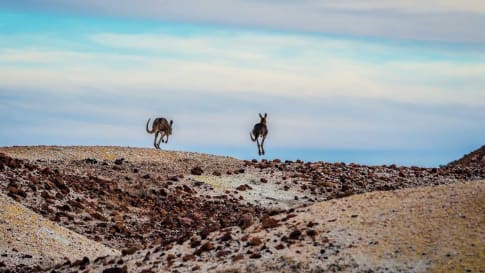
days
Feb, Apr, May, Jun, Jul +3Small group Motorcycle tours; Broken Hill and back
Visiting New South Wales
Small group tour of New South Wales, Queensland & South Australia deserts, from Broken Hill. Learn about the history of the people who explored the deserts, from indigenous communities to Europeans, as well as Burke and Wills, visit White Cliffs, Birdsville, Marree. Explore the outback by motorbike limited to 8 riders.
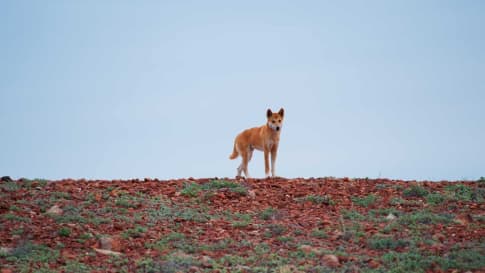
days
Apr, May, Jul, Aug, Oct +2Small group tour of Australia's Flinders ranges
Visiting South Australia
Escorted small group tour of the Flinders range in South Australia from Adelaide. Learn about Coober Pedy, Wilpena pound and water system of Lake Eyre as we explore and learn also about the history of the people who explored the Flinders.

14 days
May, Jun, Jul, Aug, SepSmall group tour of Australia's Kimberley
Visiting Western Australia
Escorted small group tour of the Kimberley. We explore and visit The Bungles, Bell Gorge, Mitchell plateau & Halls Creek in the dry season. Amazing landscapes intertwined with Aboriginal communities resident more than 45,000 years.
From A$15,390 AUD
View Tour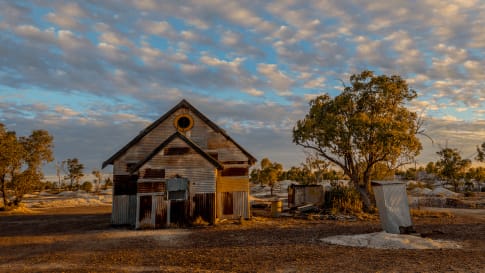
days
Mar, Apr, May, Jul, Aug +2Small group tour of outback Queensland
Visiting New South Wales, Queensland
To Dubbo and back, this small group tour takes you to learn about the Brewarrina fish traps, we travel high up into North Queensland to see the Dinosaurs of Winton and incredible Aboriginal rock art at Cathedral gorge and learn about opal mining and the history of Lightning ridge.

13 days
Mar, OctSmall group tour; Broken Hill and back
Visiting New South Wales, Queensland
Small group tour of New South Wales, Queensland & South Australia deserts, from Broken Hill. Learn about the history of the people who explored the deserts, from indigenous communities to Europeans, as well as Burke and Wills, visit White Cliffs, Birdsville, Maree.
From A$11,550 AUD
View Tour
14 days
Oct, AprThe Darling River Run small group tour
Visiting New South Wales, Victoria
Small group tour for the mature and senior traveller of the Darling River. Learn about the history, culture and landscapes of the Darling, a key part of the Australian river system including Aboriginal trading routes and aquaculture. Suitable for mature and senior couples or solo travellers.
From A$10,750 AUD
View TourArticles

Aboriginal Art
Senior and mature couples and solo travellers remain curious but often informed about the role Aboriginal art plays in the indigenous community and the various styles. This article seeks to provide a platform for this collection of small group tours of upto 15 people into the Australian outback where often Aboriginal art styles are encountered.

Aboriginal culture of the Flinders Ranges, South Australia
The iconic Flinders Ranges of South Australia have a rich Aboriginal heritage and are home to a number of vitally important cultural sites and ancient artworks that this small group tour for mature and senior travellers has the opportunity its to learn about.
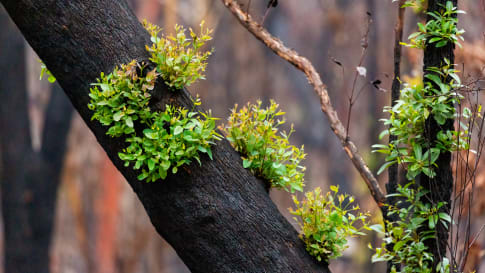
Aboriginal Fire Management
Small group tours for mature and senior travellers in the Australian outback to learn and appreciate land management techniques for couples and solo travellers reflecting Aboriginal culture in Kakadu, Tasmania, Arnhem land and the Kimberley.

Aboriginal history and culture of Kakadu National Park, Northern Territory
For those seek to learn as they travel then the history of the Aboriginal journey and timelines that unfold as a discovery in Australia seek to fascinate the mature and senior traveller on a small group package tour for couples and singles. From Darwin, this tour also visits Arnhem land as well as Kakadu, during the dry season.

Aboriginal land use in the Mallee
Learning about the Mallee for a escorted small group tour of South Australia and Western Australia for mature and senior travellers. Understand the Mallee & Wildflowers relationship and the indigenous community land use.

Aboriginal Rock Art in the Kimberley, Australia
The Kimberley is explored on a small group tour for mature and senior travelers, couples or singles. Both Aboriginal community is studied and an appreciation of the wet and dry seasons. This guide on the Kimberley assists the traveler as you start from Broome and travel round via Halls creek and Purnunulu national park over some 17 days in a group of up to 12 people.

Aboriginal Sites of Importance in Outback Queensland, Australia
Outback Queensland is hiding a number of unforgettable indigenous experiences on this small group tour for senior travellers. Especially at the Brewarrina Fish Traps, and Carnarvon Gorge, for example where you can experience and learn about dreamtime creation stories, age-old cultural practices and traditions, and Aboriginal art.

Ancient Aboriginal trade routes of Australia
Ancient Aboriginal trade routes of Australia Trade was a central part of life for Aboriginal people prior to the British settlement of Australia. Trading routes criss-crossed the nation, dispersing goods, information, technologies and culture thousands…

Madjedbebe Archaeological Site, Northern Territory
Madjedbebe Archaeological Site, Northern Territory Near the border of western Arnhem Land and Kakadu National Park in Australia’s ‘top end’, Madjedbebe rock shelter (formerly known as Malakunanja II) is the oldest archaeological site in Australia,…
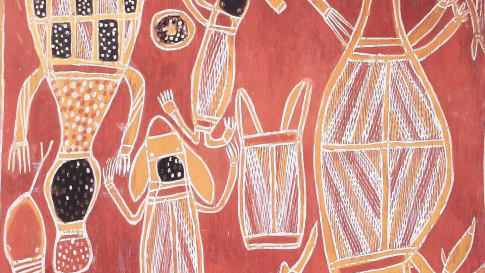
Milingimbi Art
Milingimbi art, studied and discussed on a small group tour for mature and senior travellers interested in history and art. Milingimbi is one of a number of different acclaimed art styles of the Aboriginal community history.
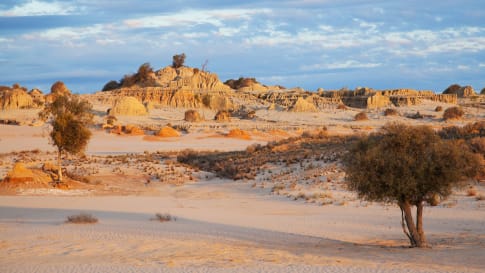
Mungo Man and Mungo Lady, New South Wales
Part of a small group tour of World heritage sites on Victoria, NSW & South Australia for mature and senior travellers. Learn and explore in the Mungo National park about Aboriginal settlement and the fauna and flora of this National park.

The Arrival of Aboriginal Australians on the Continent
Tracing Aboriginal history via an outback small group tour for mature and senior couples or solo travellers provides an intriguing learning platform about Australia, rock art, trading and culture that traces a history possibly some 120,000 years ago.

The Australian Outback: A Definitive Guide
Explore learn and consider what is the outback in this article. For mature and senior travelers considering joining a small group package tours into the outback to see, learn and explore about this unique place, not only the landscape but the Aboriginal approach to living. On each of the tours for couples and the single traveler you learn something different but fascinating, from Outback Queensland, the Flinders, Broken Hill and the Kimberley and the wildflowers all contribute to this question, what is the outback?

Uncovering the ancient history of Aboriginal Australia
For small group escorted tours of Australia in Queensland, Victoria, New South Wales, South Australia, Tasmania, Western Australia and the Northern Territory a guide on Aboriginal culture for mature and senior travellers.

Understanding Aboriginal aquaculture
Aboriginal communities had the ability to harvest fish some 20,000+ years ago. Creating major centres of trade and cultural exchange, and supported permanent communities. Discover and learn more on a escorted small group package tour to Victoria, South Australia & Queensland for mature and senior travellers, couples and solo travellers interested in learning.
